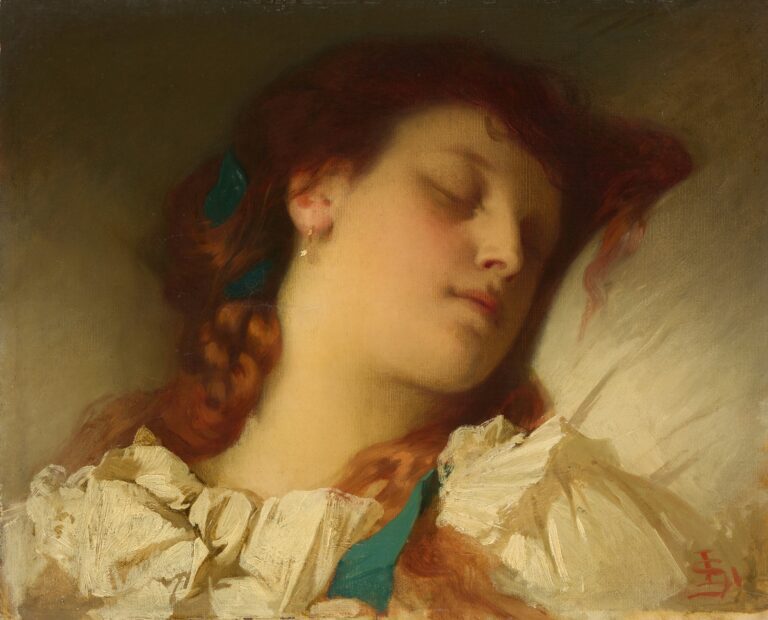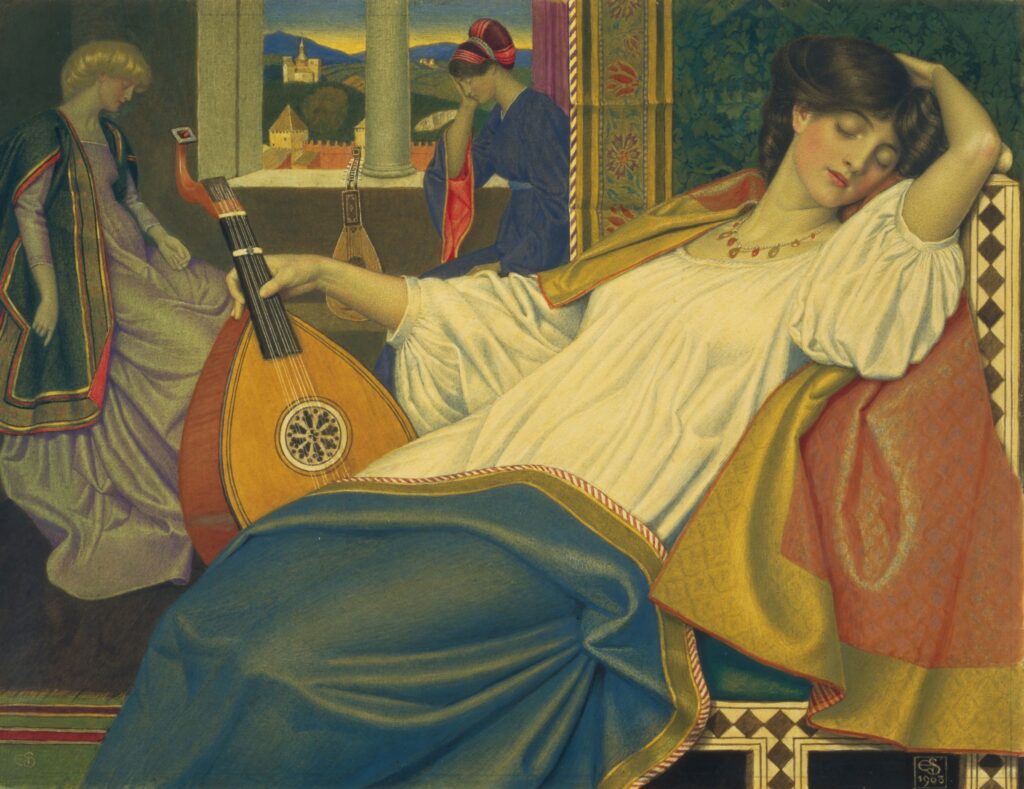
The importance of sleep in human life is indisputable, as it plays a vital role in our physical, mental, and emotional well-being. From the restoration of bodily functions to the consolidation of memories and learning, sleep is essential for maintaining overall health and productivity. It is no wonder, then, that sleep has been a subject of fascination for humans throughout history.
In literature and art, sleep has been an enduring theme, serving as a symbol, metaphor, and narrative device. From ancient texts to modern masterpieces, creative works have depicted sleep in various ways, exploring its mysteries, challenges, and impact on the human experience. These portrayals of sleep have not only enriched our understanding of its role in our lives but have also provided insights into the cultural and historical contexts in which they were created.
The purpose of this article is to delve into the diverse depictions and interpretations of sleep in various forms of literature and art, spanning different time periods and cultures. By examining these artistic expressions, we aim to gain a deeper appreciation of the role sleep has played in shaping human creativity, storytelling, and our understanding of the world.
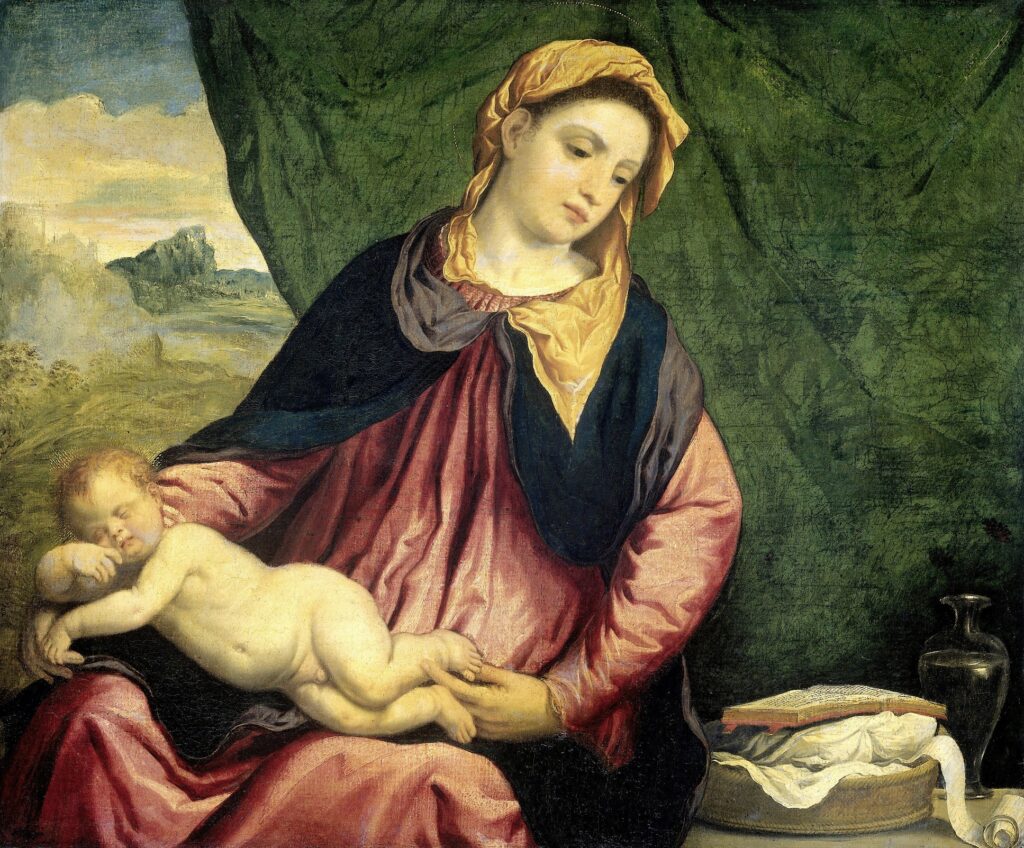
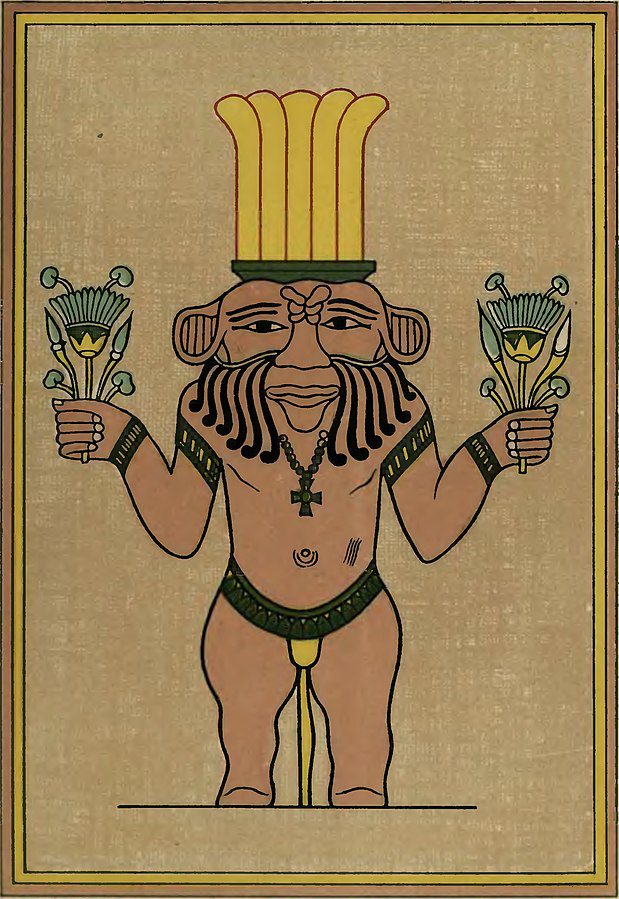
Sleep in Ancient Literature and Art
Egyptian, Mesopotamian, and Greek mythology are rich with gods and goddesses associated with sleep and dreams. These mythological figures played important roles in ancient cultures, as people sought to understand and interpret the mysterious realm of sleep.
Egyptian gods and goddesses: Bes and Nut
In ancient Egyptian mythology, Bes was considered the protector of households, particularly with regard to sleep. Often depicted as a dwarf with a lion-like face, Bes was believed to ward off evil spirits and nightmares, ensuring a peaceful night’s rest for the inhabitants of the household. He was also associated with protection during childbirth, music, and dance.
Nut, the Egyptian sky goddess, was closely associated with the night. As the embodiment of the nighttime sky, Nut was believed to swallow the sun each evening and give birth to it anew each morning. She was also considered the mother of the stars and the moon. Nut was often depicted as a woman arched over the earth, her body covered in stars, symbolizing her role in the cycle of day and night.
Mesopotamian deities: Nanshe and Mamu
In Mesopotamian mythology, Nanshe was the goddess of dreams, social justice, and fertility. She was believed to possess the power to interpret dreams and provide guidance to those who sought her wisdom. As a divine judge, Nanshe was also associated with maintaining order and fairness in society.
Mamu, another Mesopotamian deity, was the god of dreams and visions. He was often invoked to aid individuals in deciphering the meaning behind their dreams, as these were believed to contain messages and prophecies from the gods. Mamu’s role as a divine messenger made him an important figure in Mesopotamian religious practices.
- Greek mythology: Hypnos, Morpheus, and the Oneiroi
In Greek mythology, Hypnos was the god of sleep and brother to Thanatos, the god of death. Hypnos was often depicted as a gentle, benevolent figure who brought rest and respite to weary mortals. He lived in a palace in the realm of dreams, surrounded by sleep-inducing plants like poppies.
Morpheus, the god of dreams, was one of Hypnos’ sons and was considered the most skilled among them. He had the power to shape-shift into any human form and enter the dreams of mortals, often delivering messages from the gods or influencing their thoughts and actions during sleep.
The Oneiroi were personifications of dreams in Greek mythology and served as minor deities. They were the siblings of Hypnos and Morpheus, and the children of Nyx, the goddess of night. As ethereal beings, the Oneiroi would emerge from the gates of the underworld each night, carrying dreams to mortals in the form of images and symbols.
These gods and goddesses associated with sleep and dreams demonstrate the importance of these phenomena in ancient cultures. Sleep and dreams were not only considered essential aspects of daily life, but also as mysterious realms where the divine could communicate with the mortal world.
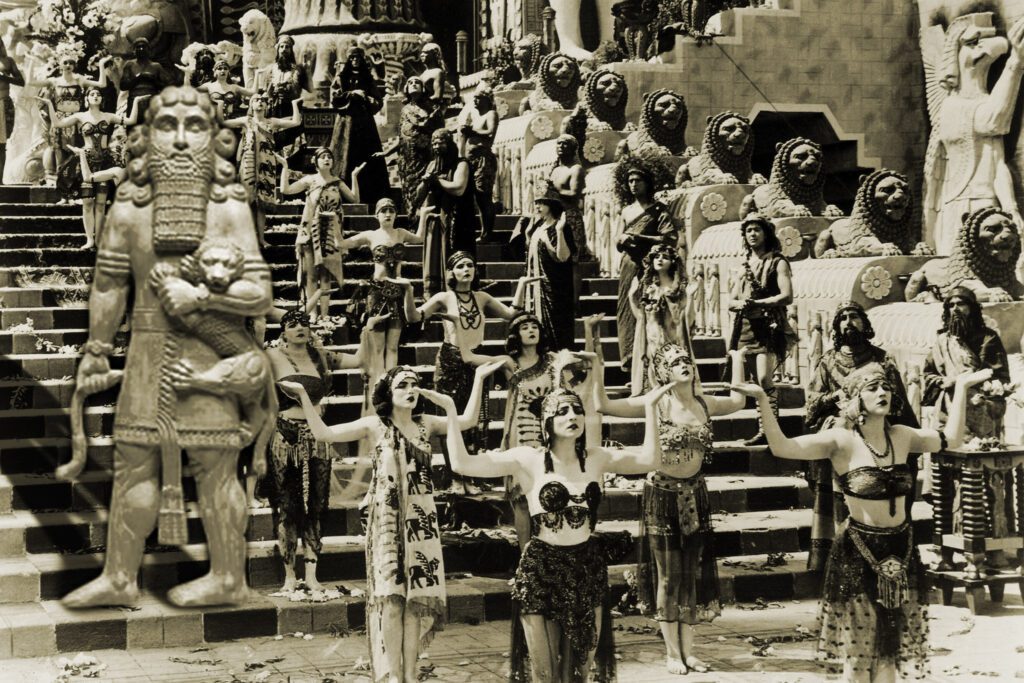
The Story of Gilgamesh
Sleep and dreams play a significant role in the Epic of Gilgamesh, one of the earliest known works of literature. This ancient Mesopotamian epic tells the story of Gilgamesh, the king of Uruk, and his journey of self-discovery alongside his friend and companion, Enkidu. Throughout the narrative, sleep and dreams serve as transformative experiences, sources of divine messages, and integral plot elements that shape the hero’s journey.
- The role of sleep as a transformative experience in the hero’s journey
In the Epic of Gilgamesh, sleep serves as a powerful transformative experience that marks key moments in the hero’s journey. When Enkidu, initially a wild man who lives among animals, sleeps with the temple priestess Shamhat, he undergoes a profound transformation. After this encounter, he loses his connection with wild animals and becomes more human-like, ultimately leading him to meet and befriend Gilgamesh.
Later, when Gilgamesh and Enkidu embark on their quest to defeat the monstrous Humbaba, they experience a series of dreams during their sleep. These dreams shape their understanding of their journey and foreshadow the challenges they will face, contributing to the transformation of Gilgamesh from a tyrannical ruler into a more compassionate and wise leader.
- Gilgamesh’s prophetic dreams as divine messages
Throughout the epic, Gilgamesh experiences several prophetic dreams that serve as divine messages and guidance on his journey. For example, before his confrontation with Humbaba, Gilgamesh dreams of a meteorite falling from the sky, which Enkidu interprets as a positive omen indicating the gods’ support. These dreams help to reinforce the heroes’ resolve and prepare them for the trials they will face.
Additionally, Gilgamesh dreams of the Bull of Heaven, which foreshadows the conflict with the goddess Ishtar and the ensuing battle with the celestial bull. This dream provides insight into the challenges Gilgamesh must face and emphasizes the role of divine intervention in his journey.
- The significance of Enkidu’s dreams in the narrative
Enkidu’s dreams also play a crucial role in the narrative, particularly in foreshadowing his own death. After Gilgamesh and Enkidu kill Humbaba and the Bull of Heaven, Enkidu dreams of the gods holding a council in which they decide that he must die as punishment for his actions. This dream serves as a turning point in the story, as it signals the beginning of the end for Enkidu and ultimately leads to his demise.
Enkidu’s death profoundly affects Gilgamesh, prompting him to embark on a new quest to seek the secret of eternal life. In this way, Enkidu’s dreams not only contribute to the development of the plot but also shape the trajectory of Gilgamesh’s personal growth and transformation.
In conclusion, sleep and dreams play a pivotal role in the Epic of Gilgamesh, serving as transformative experiences, divine messages, and essential plot elements. These aspects of the narrative reflect the importance of sleep and dreams in ancient Mesopotamian culture and showcase the depth of human understanding and fascination with these phenomena even in the earliest works of literature.
The Odyssey
The role of sleep in Homer’s Iliad and Odyssey is multifaceted, serving as a metaphor for death and vulnerability, a means for divine intervention, and a symbolically significant element in the hero’s journey.
- Sleep as a metaphor for death and vulnerability in the Iliad
In the Iliad, sleep is often used as a metaphor for death, emphasizing the vulnerability of the warriors on the battlefield. Characters such as Patroclus and Hector are killed while their opponents are in a state of sleep or temporary rest. Sleep serves as a reminder that even the mightiest of warriors are susceptible to moments of vulnerability, just as they are to the ultimate vulnerability of death.
Additionally, sleep sometimes represents a respite from the horrors of war, as soldiers seek rest amidst the chaos and bloodshed. However, this respite can also be short-lived and dangerous, as the battlefield is an unpredictable and treacherous environment.
- The intervention of gods through sleep and dreams in the epic narratives
The gods play a significant role in both the Iliad and the Odyssey, often intervening in the lives of mortals through sleep and dreams. In the Iliad, Zeus sends a deceptive dream to Agamemnon, convincing him that the time is ripe for a successful attack on the city of Troy. This dream ultimately leads to disastrous consequences for the Achaean forces and highlights the power of the gods to manipulate the fate of mortals through their dreams.
Similarly, in the Odyssey, the gods frequently communicate with Odysseus and other characters through dreams and visions during sleep. Athena, in particular, offers guidance and assistance to Odysseus as he embarks on his long and perilous journey home.
- The symbolic significance of sleep and dreams in Odysseus’ journey home in the Odyssey
Sleep and dreams serve a symbolic function in the Odyssey, reflecting the psychological and emotional states of the characters as they navigate their respective journeys. Odysseus, for example, is often plagued by sleeplessness due to his longing for home and the many dangers he encounters along the way. His inability to find rest underscores the challenges he faces and his resilience in overcoming them.
In contrast, when Odysseus finally returns to Ithaca and is reunited with his wife, Penelope, their shared sleep symbolizes the restoration of their relationship and the resolution of Odysseus’ long and arduous journey. This peaceful sleep stands in stark contrast to the turmoil and unrest that defined much of his odyssey.
The role of sleep in Homer’s Iliad and Odyssey is complex and nuanced, serving as a metaphor for death and vulnerability, a vehicle for divine intervention, and a symbolically significant aspect of the hero’s journey. These elements highlight the importance of sleep as a literary device and a window into the human experience in ancient Greek culture.
Sleep in Medieval and Renaissance Literature and Art
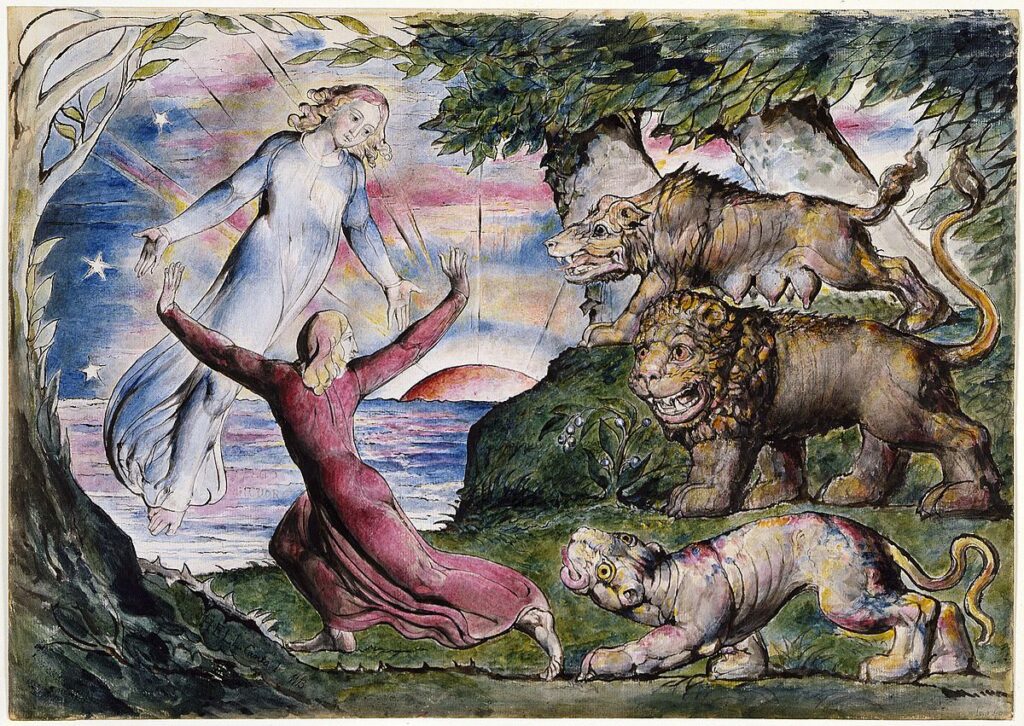
Sleep in the works of Dante, Chaucer, and Boccaccio
Sleep, dreams, and their related themes play significant roles in the works of Dante, Chaucer, and Boccaccio, three of the most influential authors in medieval literature.
Dante’s Divine Comedy: The role of sleep in the journey through Hell, Purgatory, and Heaven
In Dante’s Divine Comedy, sleep and dreams serve as transitional devices and sources of divine inspiration throughout the protagonist’s journey. As Dante and his guide, Virgil, traverse the realms of Hell, Purgatory, and Heaven, sleep often marks the transition between different stages of the journey. For example, Dante falls asleep at the entrance to Purgatory, waking up to find himself miraculously transported to the shores of Mount Purgatory.
Dreams in the Divine Comedy often carry symbolic significance and divine messages. Dante experiences several prophetic dreams during his journey, which foreshadow upcoming events or provide spiritual guidance. These dreams underscore the connection between the mortal realm and the divine, emphasizing the importance of divine intervention in Dante’s spiritual journey.
Chaucer’s Canterbury Tales: The use of dreams and sleep as storytelling devices
In Chaucer’s Canterbury Tales, dreams and sleep are frequently employed as storytelling devices and thematic elements. Several of the tales feature dreams as important plot points or sources of insight and revelation. For instance, in “The Nun’s Priest’s Tale,” the protagonist, Chauntecleer, dreams of a fox attacking him, foreshadowing the events that later unfold in the story.
Additionally, the use of dreams and sleep in the Canterbury Tales often serves to explore the nature of reality and illusion, questioning the reliability of human perception and memory. The tales invite readers to consider the blurred boundaries between dreams and reality, truth and fiction, and the implications of these distinctions in their own lives.
Boccaccio’s Decameron: The connection between sleep, dreams, and morality in the tales
In Boccaccio’s Decameron, sleep and dreams play a significant role in the exploration of human nature and morality. Many of the tales in the Decameron feature sleep and dreams as central themes, often revealing the characters’ inner desires, fears, and moral struggles.
For example, in one of the tales, a man dreams of finding a beautiful woman who turns out to be a snake, symbolizing the dangers of succumbing to temptation and the potential consequences of immoral actions. In another tale, a character’s dream guides him to discover a hidden treasure, reflecting the idea that dreams can provide valuable insights and wisdom.
Throughout the Decameron, sleep and dreams serve as vehicles for examining the complexities of human morality, the nature of desire, and the consequences of one’s actions. These themes contribute to the larger social and moral commentary present in Boccaccio’s work.
Sleep and dreams play vital roles in the works of Dante, Chaucer, and Boccaccio, serving as transitional devices, storytelling elements, and thematic explorations of morality and human nature. The significance of sleep in these medieval masterpieces highlights the enduring importance of this universal human experience in literature and its ability to shed light on the complexities of the human condition.
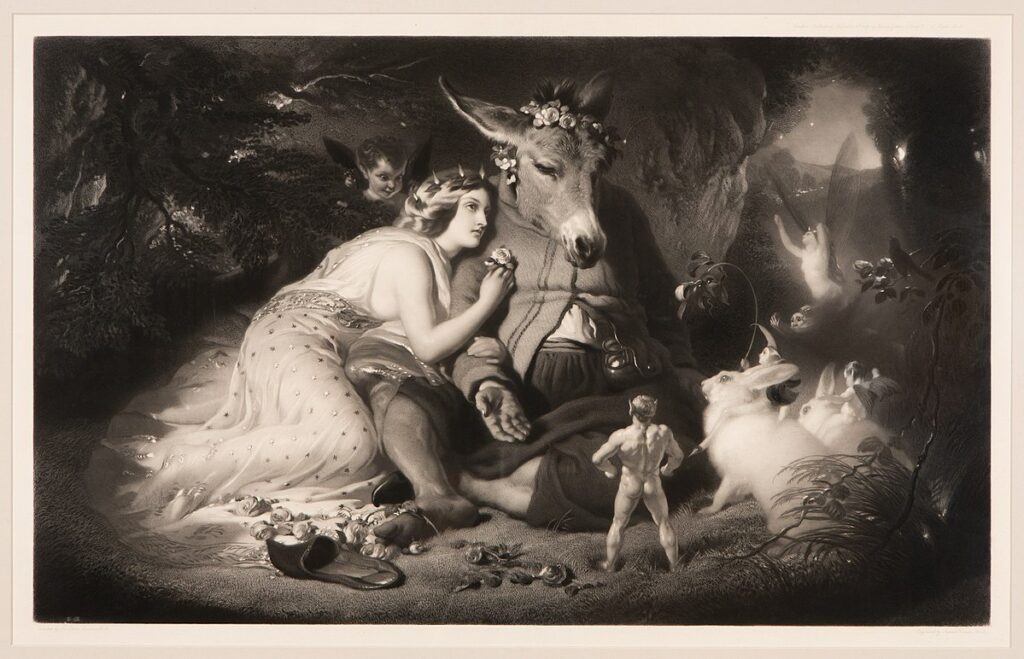
Depictions of sleep and dreams in Shakespeare’s plays
Depictions of sleep and dreams in Shakespeare’s plays serve a variety of purposes, from exploring symbolism and thematic elements to driving character development and conflict. In plays such as Macbeth, Hamlet, and A Midsummer Night’s Dream, sleep and dreams take on significant roles that contribute to the richness and complexity of the narrative.
The symbolic and thematic importance of sleep in Macbeth, Hamlet, and A Midsummer Night’s Dream
In Macbeth, sleep is a recurring theme that represents innocence, peace, and a respite from the chaos and bloodshed that surrounds the characters. After committing regicide, Macbeth laments that he has “murdered sleep” and will never know peace or rest again, highlighting the guilt and remorse he experiences as a result of his actions.
In Hamlet, the protagonist famously ponders the nature of sleep and dreams in his “To be, or not to be” soliloquy, contemplating the possibility of an eternal sleep as a release from the struggles and uncertainties of life. Hamlet’s fixation on sleep and dreams reflects his introspective nature and the play’s exploration of existential questions.
A Midsummer Night’s Dream delves deeply into the world of dreams, exploring themes of love, desire, and the blurred boundaries between reality and fantasy. The magical forest setting, where characters fall in and out of love due to the influence of a love potion, serves as a dreamlike realm where the lines between the conscious and unconscious mind are blurred.
Sleep as a plot device to drive character development and conflict
Shakespeare often uses sleep and dreams as plot devices to reveal character motivations and drive conflict within his plays. In Macbeth, Lady Macbeth’s sleepwalking scene exposes her guilt and mental turmoil, ultimately leading to her demise. Similarly, in Hamlet, the Ghost’s appearance in the form of King Hamlet, along with the revelation that he was murdered in his sleep, sets the stage for the play’s central conflict and propels the protagonist into action.
The use of sleep and dreams to explore the nature of reality and illusion in Shakespeare’s works
In many of Shakespeare’s plays, sleep and dreams serve as metaphors for the nature of reality and illusion, prompting both the characters and the audience to question the reliability of their perceptions and the distinction between truth and falsehood. This theme is particularly evident in A Midsummer Night’s Dream, where the characters’ experiences in the enchanted forest challenge their understanding of reality, leaving them to wonder if their adventures were merely dreams or if they held some deeper truth.
Similarly, in The Tempest, the character Prospero uses his magical powers to create illusions and manipulate the other characters’ perceptions, drawing attention to the tenuous boundaries between reality and imagination.
In conclusion, the depictions of sleep and dreams in Shakespeare’s plays serve a multitude of purposes, from exploring symbolism and thematic elements to driving character development and conflict. Shakespeare’s masterful use of sleep and dreams as literary devices not only enhances the depth and complexity of his works but also invites the audience to reflect on the nature of reality and the human experience.
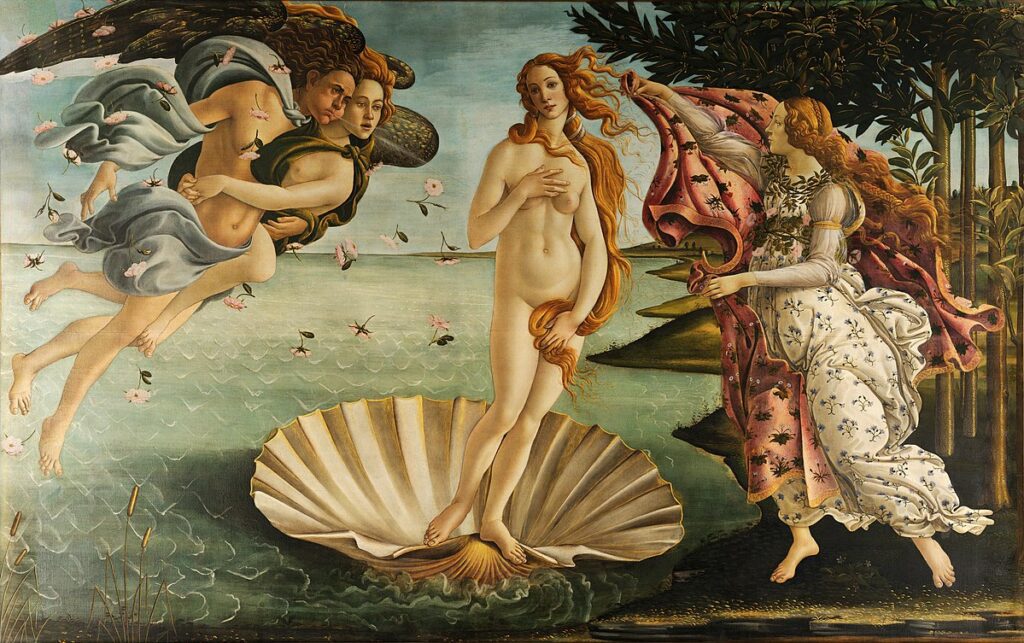
Sleep in the Renaissance
Sleep symbolism in Renaissance paintings plays a significant role in conveying deeper meaning and exploring themes related to religion, mythology, and human experience. The works of renowned artists such as Michelangelo and Botticelli demonstrate the importance of sleep symbolism in their art.
Michelangelo’s The Creation of Adam: The depiction of God awakening Adam from a deep sleep
Michelangelo’s iconic fresco, The Creation of Adam, which adorns the ceiling of the Sistine Chapel, showcases the moment when God breathes life into Adam, awakening him from a deep sleep. The depiction of sleep in this context symbolizes the transition from lifelessness to life, as well as the divine spark that imbues humanity with consciousness and reason. The portrayal of sleep in this seminal work of art underscores the importance of divine intervention in human existence and emphasizes the relationship between the Creator and His creation.
Botticelli’s The Birth of Venus: The symbolism of sleep and awakening in the context of love and beauty
In Botticelli’s famous painting, The Birth of Venus, the goddess of love and beauty emerges from the sea, standing on a shell. Although sleep is not explicitly depicted in the painting, the theme of awakening can be interpreted through Venus’ arrival into the world. This awakening symbolizes the birth of love, beauty, and sensuality in the human experience.
Moreover, the painting has been interpreted as an allegory for the awakening of the soul to divine love. In this context, the theme of awakening from sleep can be understood as a metaphor for the spiritual transformation that occurs when individuals open their hearts to the transcendent beauty and love embodied by Venus.
The role of sleep in religious and mythological themes during the Renaissance period
During the Renaissance, the use of sleep symbolism in art was often employed to explore religious and mythological themes. Artists utilized the concept of sleep to convey the idea of spiritual awakening, the transition between life and death, and the connection between the mortal and divine realms.
Representations of the biblical story of the Resurrection often depict Jesus awakening from the sleep of death, symbolizing his victory over mortality and sin. Additionally, in depictions of mythological stories, sleep might be used to represent vulnerability, transformation, or the influence of divine powers over human affairs.
Sleep symbolism in Renaissance paintings, as exemplified in the works of Michelangelo and Botticelli, serves to convey complex ideas related to religion, mythology, and the human experience. By incorporating sleep and awakening into their art, these artists invite viewers to explore profound themes and contemplate the deeper aspects of existence.
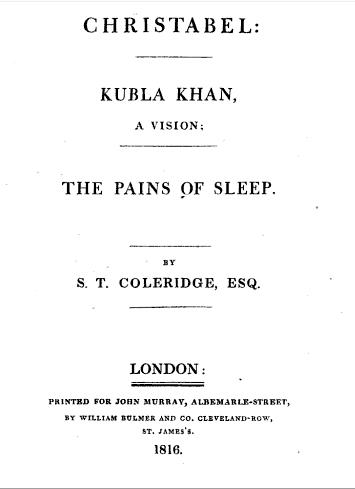
Sleep in Romaticism and Realism
Sleep and dreams in the poetry of Wordsworth, Coleridge, and Keats
The Romantic poets often explored themes of sleep and dreams in their work, using these concepts as metaphors for inspiration, transcendence, and reflection on the human condition.
Wordsworth’s exploration of sleep as a source of inspiration and reflection on the human condition
William Wordsworth, a prominent figure in the Romantic movement, often used sleep as a metaphor in his poetry to represent the mind’s ability to reflect on life, nature, and the human experience. For example, in his poem “Lines Composed a Few Miles above Tintern Abbey,” Wordsworth describes the “sweet mood” of tranquil contemplation that comes over him while in nature, comparing this state of mind to a deep sleep that allows him to connect with his inner self and find a sense of peace.
Coleridge’s “Kubla Khan”: A dream-inspired poem and the significance of sleep in the creative process
Samuel Taylor Coleridge’s famous poem “Kubla Khan” is an excellent example of the Romantic fascination with sleep and dreams. The poem was allegedly inspired by an opium-induced dream, and its vivid imagery and fantastical landscape reflect the dreamlike quality of the subconscious mind. Coleridge’s exploration of sleep and dreams in “Kubla Khan” highlights the role of the subconscious in the creative process and the power of the imagination to transcend the boundaries of the conscious mind.
Keats’ “Ode to a Nightingale” and “Sleep and Poetry”: Sleep as a metaphor for transcendence and escape from reality
John Keats, another influential Romantic poet, often employed sleep and dreams as metaphors in his work to represent the desire for transcendence and escape from the harsh realities of life. In “Ode to a Nightingale,” Keats longs for the ability to escape the world of suffering and sorrow through the transformative power of sleep, envisioning a world where he can be “half in love with easeful Death.”
Similarly, in “Sleep and Poetry,” Keats considers the role of sleep in the creative process, suggesting that the act of sleeping allows the poet to access a realm of imagination and beauty that lies beyond the confines of everyday life. Through these poems, Keats emphasizes the importance of sleep as a means of transcending the mundane and finding solace in the world of dreams and imagination.
In conclusion, the exploration of sleep and dreams in the poetry of Wordsworth, Coleridge, and Keats highlights the Romantic fascination with the subconscious mind, the creative process, and the human condition. By using sleep as a metaphor for inspiration, transcendence, and reflection, these poets invite readers to delve deeper into their own inner worlds and consider the transformative power of sleep and dreams.
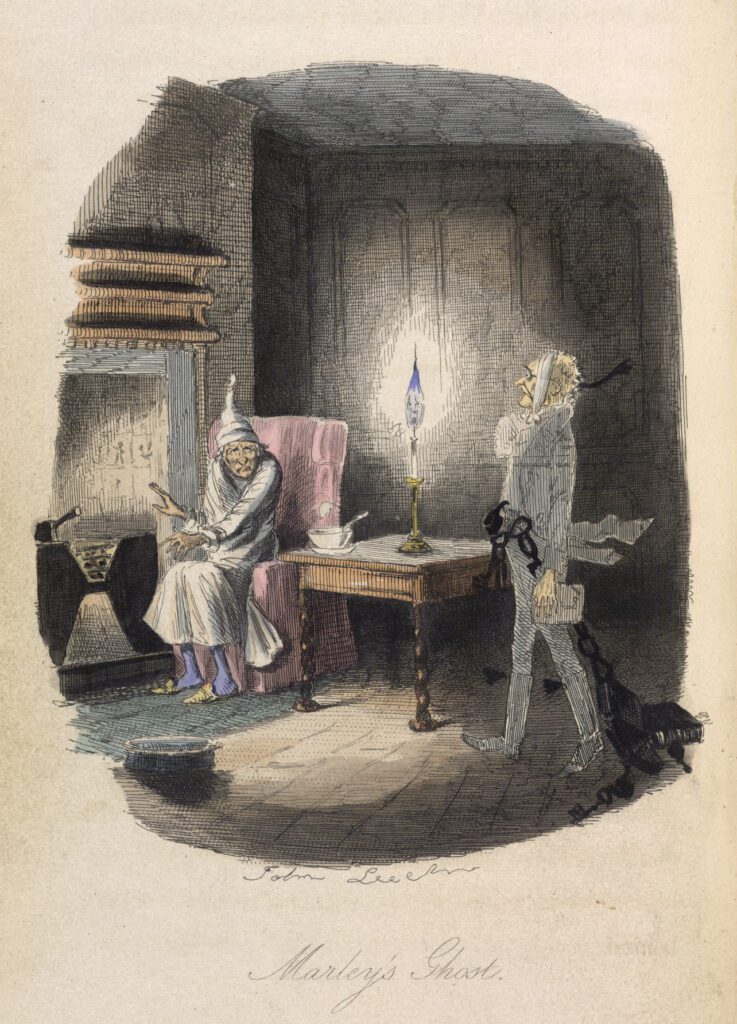
The importance of sleep in the novels of Charles Dickens, Jane Austen, and the Brontë sisters
Sleep plays a significant role in the works of many 19th-century authors, including Charles Dickens, Jane Austen, and the Brontë sisters. Through their novels, these writers used sleep and dreams to explore a variety of themes and reveal insights into their characters’ inner lives.
Charles Dickens’ exploration of sleep, dreams, and nightmares in novels such as A Christmas Carol and Oliver Twist
Charles Dickens frequently employed sleep and dreams as literary devices in his novels, using them to reveal his characters’ fears, hopes, and moral dilemmas. In A Christmas Carol, for example, Scrooge’s transformation is brought about through a series of vivid dreams and supernatural visitations that occur while he sleeps. These encounters force Scrooge to confront the consequences of his actions and ultimately lead to his redemption.
Similarly, in Oliver Twist, sleep and dreams play an important role in the narrative. Oliver’s dreams often provide a window into his innocence and longing for love and family, while the nightmares experienced by other characters, such as Fagin, reflect their guilt and inner turmoil. Through these depictions of sleep, Dickens explores themes of morality, social injustice, and the human capacity for change.
Jane Austen’s use of sleep and dreams to reveal character traits and emotions in novels like Pride and Prejudice and Sense and Sensibility
In Jane Austen’s novels, sleep and dreams are often used to reveal aspects of her characters’ personalities and emotional states. For example, in Pride and Prejudice, Elizabeth Bennet’s restlessness and inability to sleep after learning about Mr. Darcy’s role in separating Jane and Mr. Bingley demonstrate her growing emotional turmoil and feelings of confusion.
Similarly, in Sense and Sensibility, the sleep patterns and dreams of characters like Marianne Dashwood and Elinor Dashwood provide insight into their emotional lives and the romantic relationships they navigate throughout the novel. Austen’s use of sleep and dreams as a narrative tool allows her to subtly explore her characters’ inner lives and develop their emotional arcs.
The Brontë sisters’ exploration of sleep, dreams, and the supernatural in Wuthering Heights and Jane Eyre
The Brontë sisters, Emily and Charlotte, also used sleep and dreams to explore themes of passion, desire, and the supernatural in their novels. In Wuthering Heights, Emily Brontë utilizes dreams to reveal the depths of her characters’ emotions and the haunting connection between Heathcliff and Catherine. The novel’s Gothic atmosphere is further enhanced by the use of dreams and sleep to blur the line between the living and the dead.
In Jane Eyre, Charlotte Brontë uses sleep and dreams to explore themes of love, identity, and the supernatural. Jane’s dreams often foreshadow significant events in the narrative and reveal her inner desires and fears. Additionally, the novel’s Gothic elements are underscored by the use of sleepwalking and supernatural occurrences that take place in the night.
These authors use sleep and dreams to explore their characters’ inner lives, develop emotional arcs, and enhance the themes and atmospheres of their narratives. By incorporating sleep and dreams into their works, these writers offer readers a deeper understanding of their characters and the worlds they inhabit.
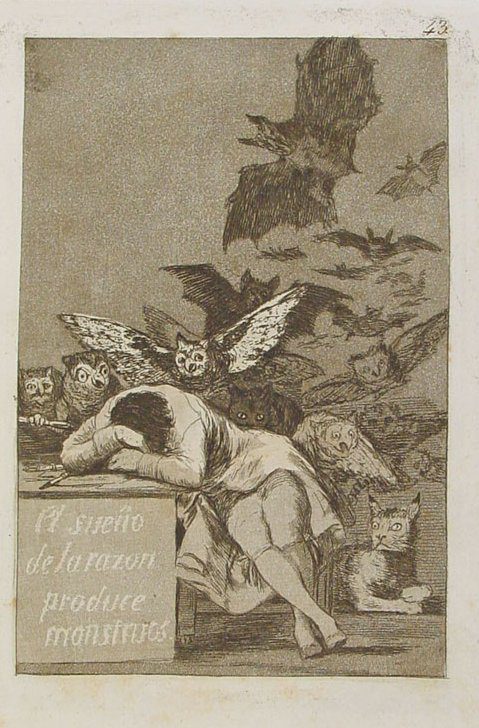
Sleep imagery in the paintings of Francisco Goya, John Everett Millais, and other realist artists
Sleep and its various connotations were popular subjects among realist artists, who used sleep imagery in their paintings to explore themes related to human nature, death, and everyday life.
Francisco Goya’s “The Sleep of Reason Produces Monsters”: The connection between sleep and the darker aspects of human nature
Francisco Goya’s “The Sleep of Reason Produces Monsters” is a print from his famous “Los Caprichos” series. The print depicts the artist asleep at his desk, surrounded by bats and owls, symbolizing the darker aspects of human nature that emerge in the absence of reason and rational thought. The print serves as a warning against the dangers of irrationality and the consequences that can arise when reason is ignored. In this context, sleep serves as a metaphor for ignorance and the dangers of unenlightened thought.
John Everett Millais’ “Ophelia”: The portrayal of sleep as a symbol of death, innocence, and vulnerability
John Everett Millais’ famous painting, “Ophelia,” depicts the Shakespearean character lying in a stream, surrounded by flowers. The painting is often interpreted as a representation of death and the transience of life. Ophelia’s sleeping form serves as a symbol of innocence and vulnerability, while the surrounding flowers allude to her eventual death by drowning. Through this depiction of sleep, Millais explores themes related to the fragility of life and the inevitability of mortality.
- The exploration of sleep as a subject in genre paintings, capturing everyday life and intimate moments
Realist artists often used sleep as a subject in their genre paintings, capturing intimate moments and everyday life. Paintings like Johannes Vermeer’s “A Maid Asleep” and Gustave Courbet’s “The Sleepers” depict individuals sleeping in private, domestic settings, highlighting the quiet intimacy of these moments and the vulnerability of the sleeper.
In other paintings, like Edward Hopper’s “Nighthawks,” sleep is used to convey a sense of solitude and isolation. The painting depicts a group of people sitting in a late-night diner, each lost in their own thoughts and seemingly disconnected from one another. The use of sleep imagery in this painting underscores the theme of loneliness and the human need for connection and companionship.
Sleep imagery played an important role in the works of realist artists, who used the subject to explore a variety of themes related to human nature, death, and everyday life. Whether used as a metaphor for ignorance, a symbol of death and vulnerability, or a representation of intimate moments and solitude, sleep imagery provided a powerful visual language for these artists to explore the complexities of the human experience.
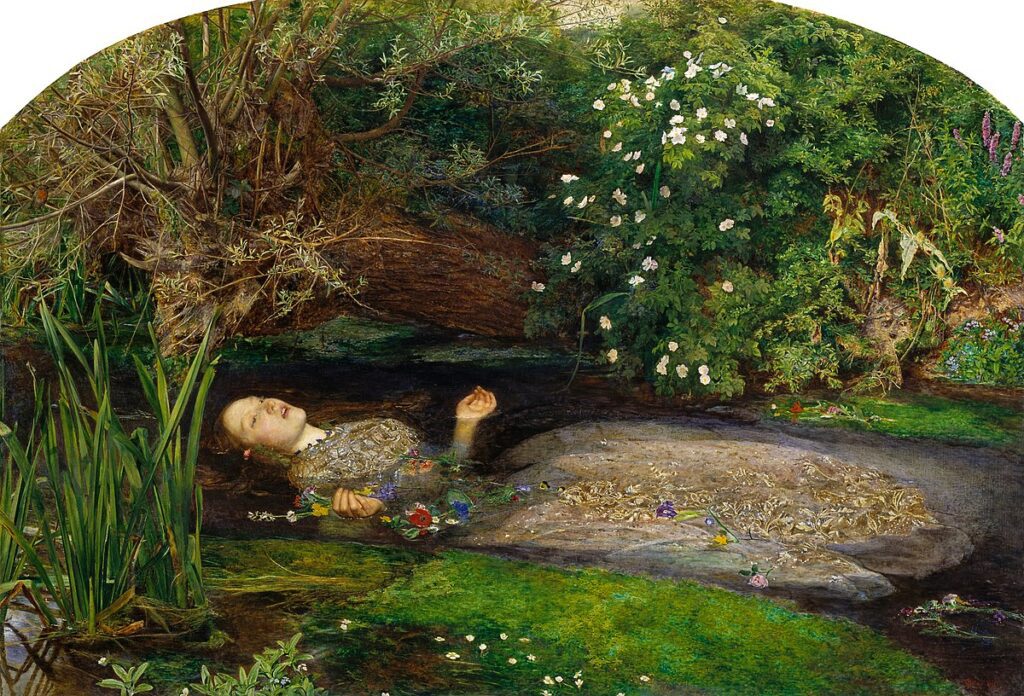
Depictions of insomnia and sleep disorders in modern literature, such as in Franz Kafka’s The Metamorphosis and F. Scott Fitzgerald’s The Great Gatsby
Insomnia and other sleep disorders have been explored in modern literature, providing insight into characters’ mental states and emotional turmoil.
The role of sleeplessness in illustrating the protagonist’s alienation and existential crisis in Kafka’s The Metamorphosis
In Kafka’s The Metamorphosis, the protagonist, Gregor Samsa, experiences a complete inability to sleep after he transforms into an insect. This sleeplessness serves as a metaphor for his existential crisis and feelings of alienation from his former life. Gregor’s insomnia reflects the sense of disorientation and helplessness he experiences in his new form, highlighting his lack of control over his own life and circumstances.
The symbolism of insomnia in depicting the restless, unfulfilled lives of characters in Fitzgerald’s The Great Gatsby
In Fitzgerald’s The Great Gatsby, insomnia is used as a symbol of the characters’ restless, unfulfilled lives. The novel’s protagonist, Jay Gatsby, is plagued by insomnia as he obsesses over his past love and tries to climb the social ladder. Similarly, the other characters in the novel, such as Nick Carraway and Daisy Buchanan, struggle with insomnia as they grapple with their own desires and the disappointments of their lives. The use of insomnia in the novel reflects the restlessness and unease of the characters’ existences, emphasizing their longing for something more.
This provides a glimpse into characters’ inner lives and emotional turmoil. Through the use of these literary devices, authors like Kafka and Fitzgerald explore themes related to alienation, existential crisis, and unfulfilled desires. These depictions of insomnia serve to highlight the complexity of human experience and the impact that sleep and its disorders can have on our mental and emotional states.
Sleep-related themes in contemporary literature, including magical realism and science fiction
Sleep and dreams continue to be popular literary themes in contemporary literature, with authors exploring the deeper meanings and implications of these topics.
The exploration of dreams and sleep in the works of Gabriel García Márquez, such as One Hundred Years of Solitude
In One Hundred Years of Solitude, Gabriel García Márquez uses dreams and sleep to explore themes of time, memory, and the cyclical nature of life. The novel is infused with magical realism, with characters experiencing prophetic dreams and supernatural occurrences. Through the depiction of sleep and dreams, Márquez emphasizes the mystical quality of life and the way in which our dreams and memories shape our perceptions of reality.
The portrayal of futuristic sleep technology and its implications on society in science fiction novels, such as Do Androids Dream of Electric Sheep? by Philip K. Dick
In science fiction literature, authors often explore the implications of futuristic sleep technology on society. In Do Androids Dream of Electric Sheep?, Philip K. Dick imagines a future where people use mood organs to regulate their emotions and sleep machines to control their dreams. The novel explores the impact of this technology on the human psyche, questioning whether it leads to greater happiness or emotional numbness. Through this exploration of sleep technology, Dick highlights the potential dangers of using technology to control our most fundamental human experiences.
Sleep-related themes continue to be popular subjects in contemporary literature, with authors exploring the deeper meanings and implications of sleep and dreams in unique and imaginative ways. Whether through magical realism or science fiction, these writers offer insights into the human experience and the impact that sleep has on our lives and societies.
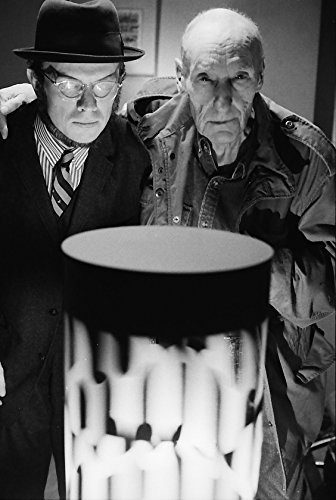
The influence of sleep research on modern art, such as installations and performance pieces
Sleep research has influenced modern art, inspiring artists to create installations and performance pieces that explore the themes of sleep and its effects on the human psyche.
The incorporation of sleep and dreams in multimedia installations, like the Dreamachine by Brion Gysin
The Dreamachine is a multimedia installation created by Brion Gysin that consists of a spinning cylinder with a light inside. The device is designed to create flickering patterns of light that stimulate the visual cortex and induce a hypnotic state. Gysin believed that the Dreamachine could induce lucid dreaming and provide access to the subconscious mind, offering a unique and immersive experience for the viewer.
Other multimedia installations, such as those by contemporary artist Pipilotti Rist, also incorporate sleep and dreams as central themes. Rist’s installations use video, sound, and lighting to create immersive environments that transport the viewer into a dreamlike state, blurring the line between reality and the subconscious.
The exploration of sleep deprivation and its effects in performance art, such as Marina Abramović’s “The House with the Ocean View””
Performance artists have also used sleep deprivation as a tool to explore the limits of the human body and mind. In Marina Abramović’s performance piece, “The House with the Ocean View,” the artist spent three days living in a gallery space without food or sleep, interacting with visitors and documenting her experiences through video and photography. Through this exploration of sleep deprivation, Abramović aimed to push the limits of the body and mind, questioning the role of the artist and the boundaries of the human experience.
Other performance artists, such as Tehching Hsieh and Ron Athey, have also used sleep deprivation as a tool to explore themes related to the body, endurance, and the human condition.
Sleep research has inspired modern artists to explore the themes of sleep and its effects on the human psyche through multimedia installations and performance art. Through these works, artists offer unique insights into the nature of consciousness, the subconscious mind, and the limits of the human experience.
Sleep and Art in the 21st Century and Beyond
Throughout history, sleep has been a popular subject matter in literature and art, explored through a variety of lenses and interpretations. From mythology and religion to modern multimedia installations, sleep has been used to explore themes related to the human experience, including love, death, and the subconscious mind.
Depictions of sleep and dreams in various forms of literature and art, including ancient mythology, Renaissance paintings, and modern performance art. We have seen how artists and writers have used sleep to explore themes related to the human condition, from the fragility of life and the inevitability of mortality to the mysteries of the subconscious mind and the potential dangers of sleep technology.
Despite the centuries of exploration, the importance of sleep as a subject matter in the creative world continues to endure. As our understanding of sleep science continues to evolve, there is potential for future exploration of sleep in literature and art. We may discover new ways to use sleep as a tool to explore the nature of consciousness and the human experience, offering unique insights into the mysteries of the mind and the meaning of life itself.
The study of sleep and its depictions in literature and art provides a window into the human experience, highlighting the complexity and beauty of our most fundamental bodily function. As we continue to explore the mysteries of sleep, we can look forward to new and exciting works of literature and art that push the boundaries of our understanding and offer new insights into the nature of the human condition.

